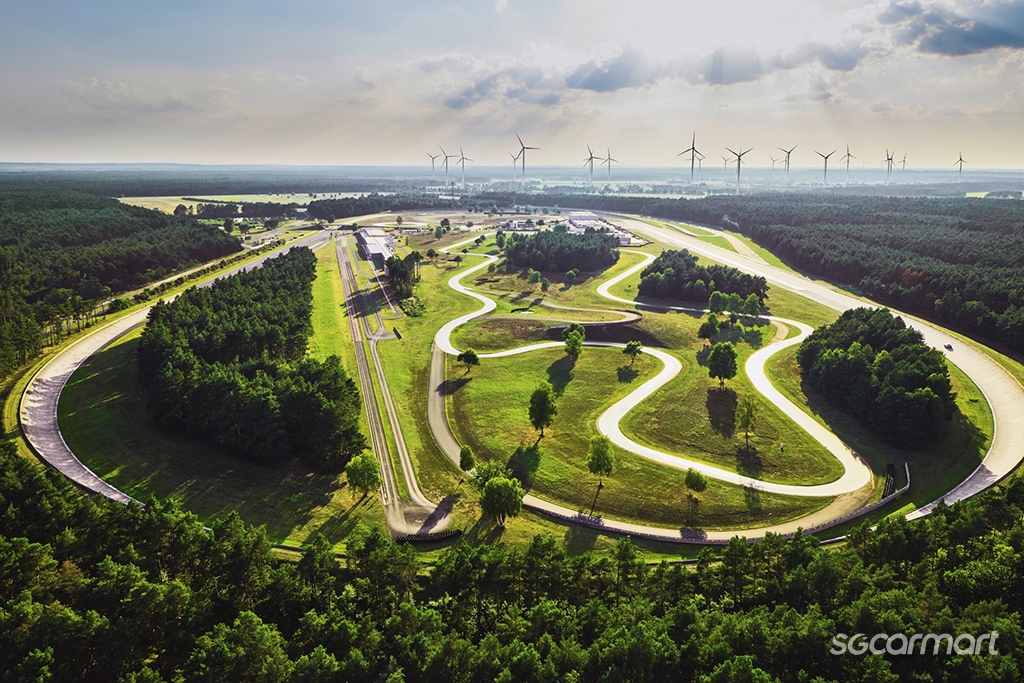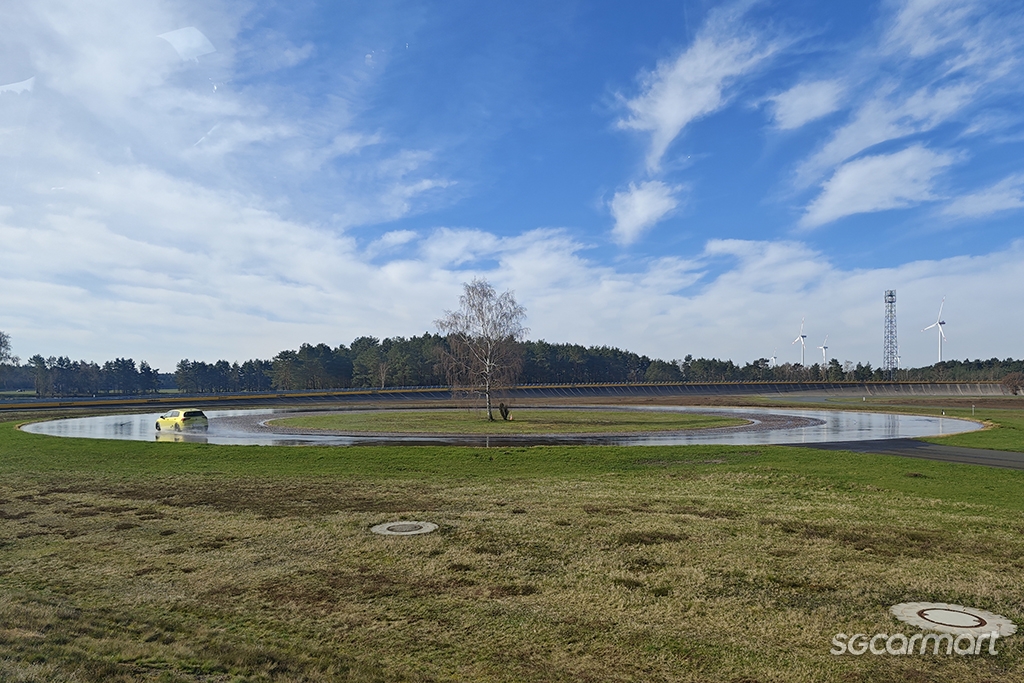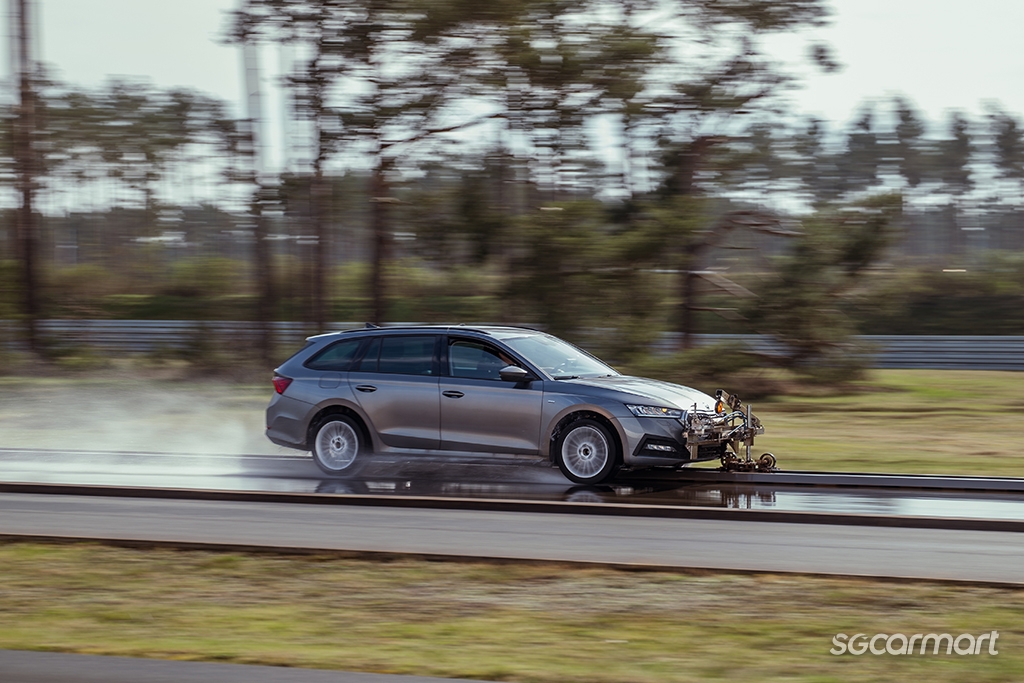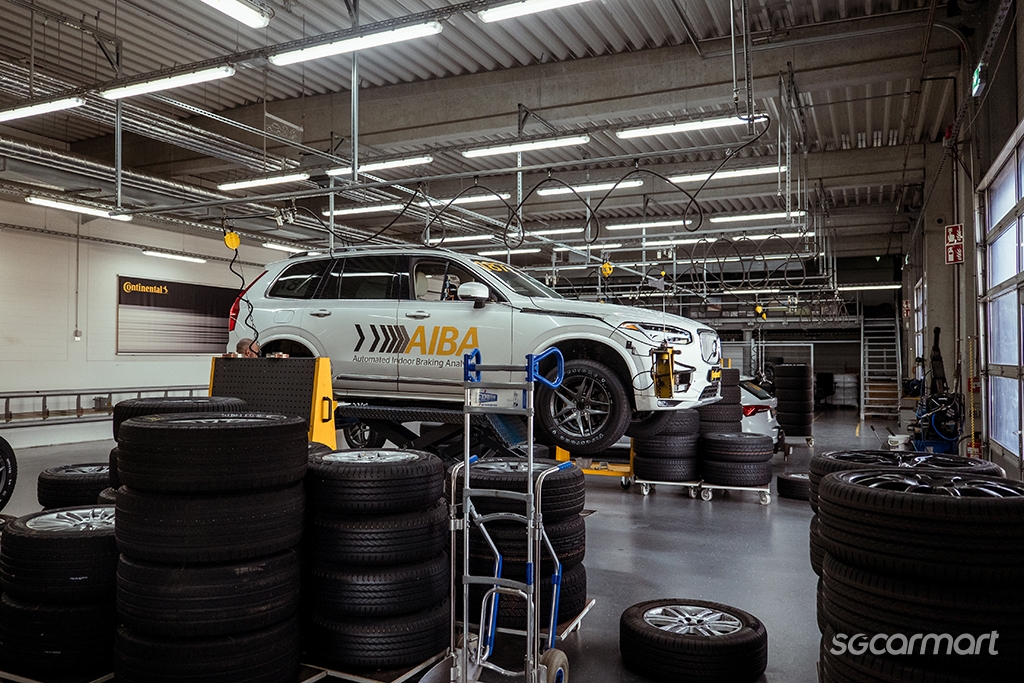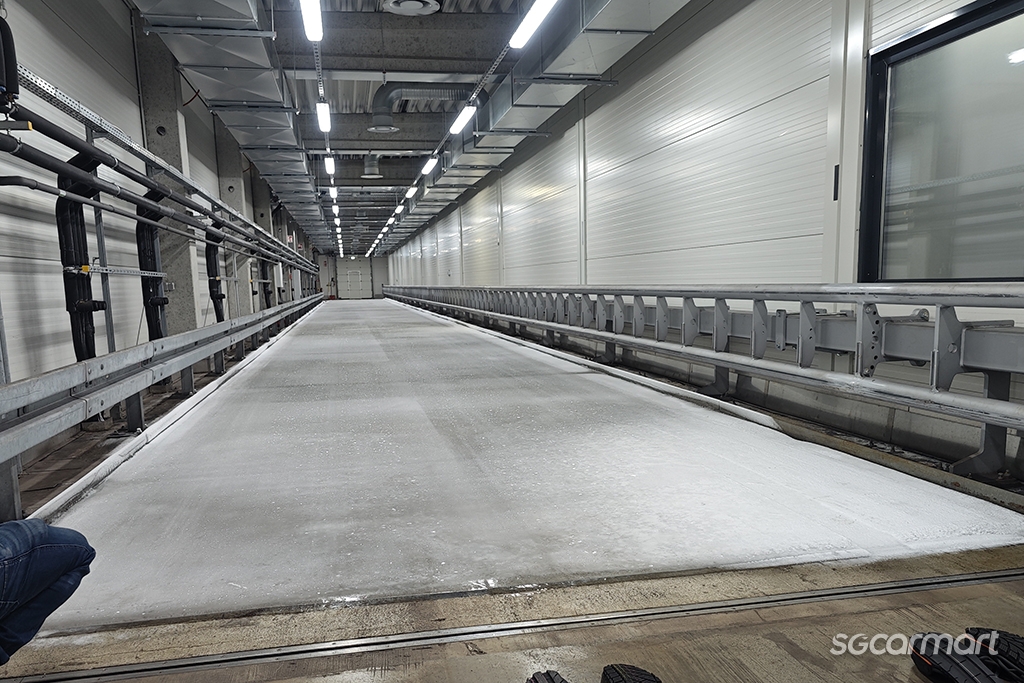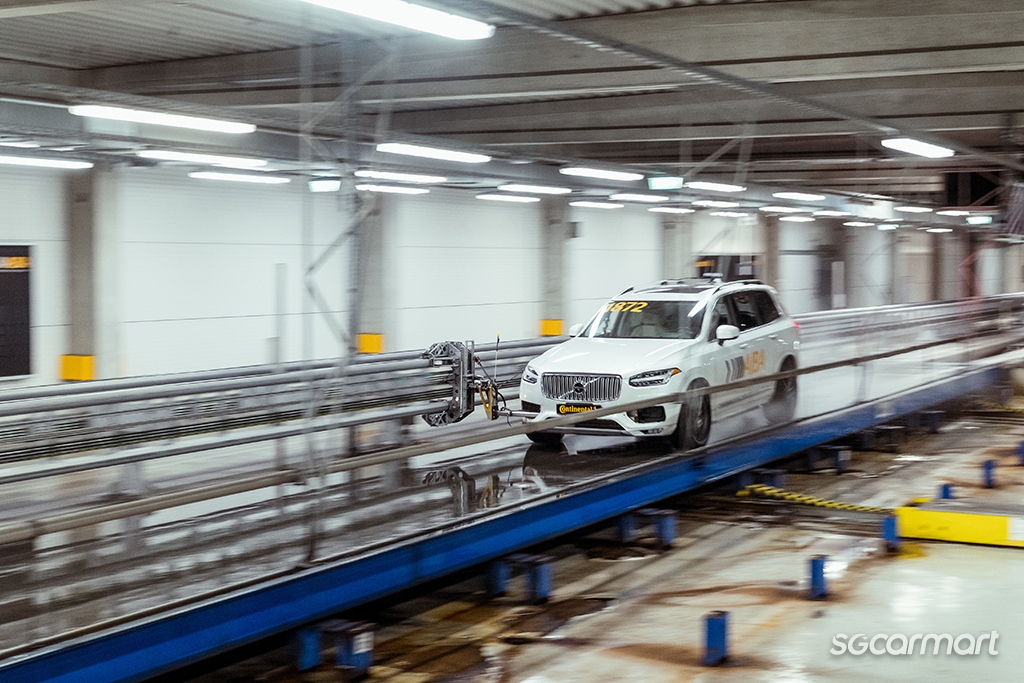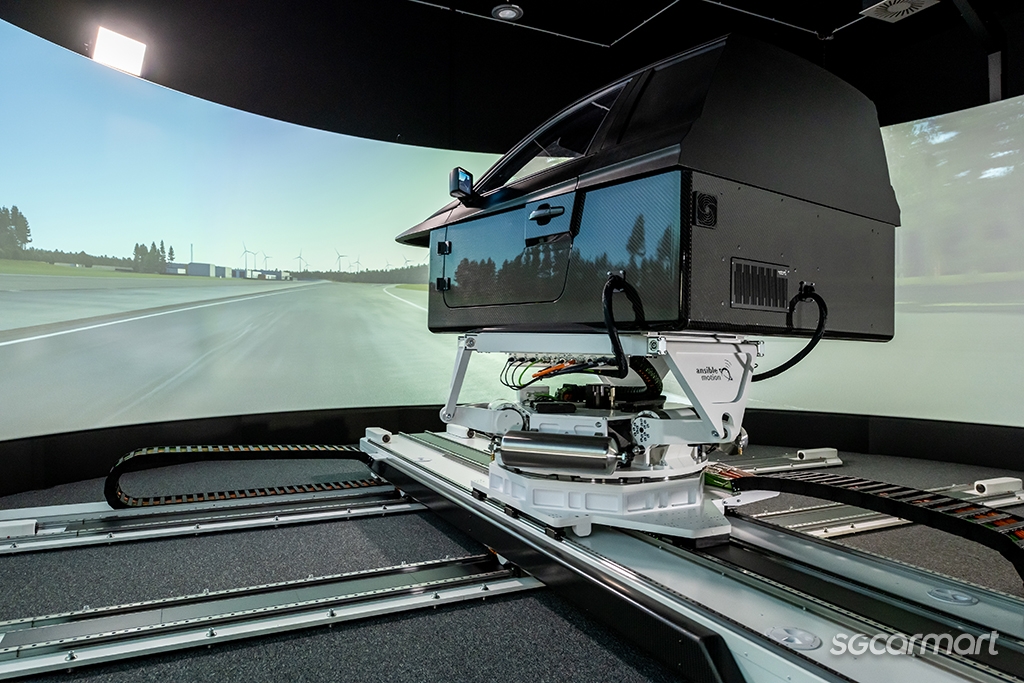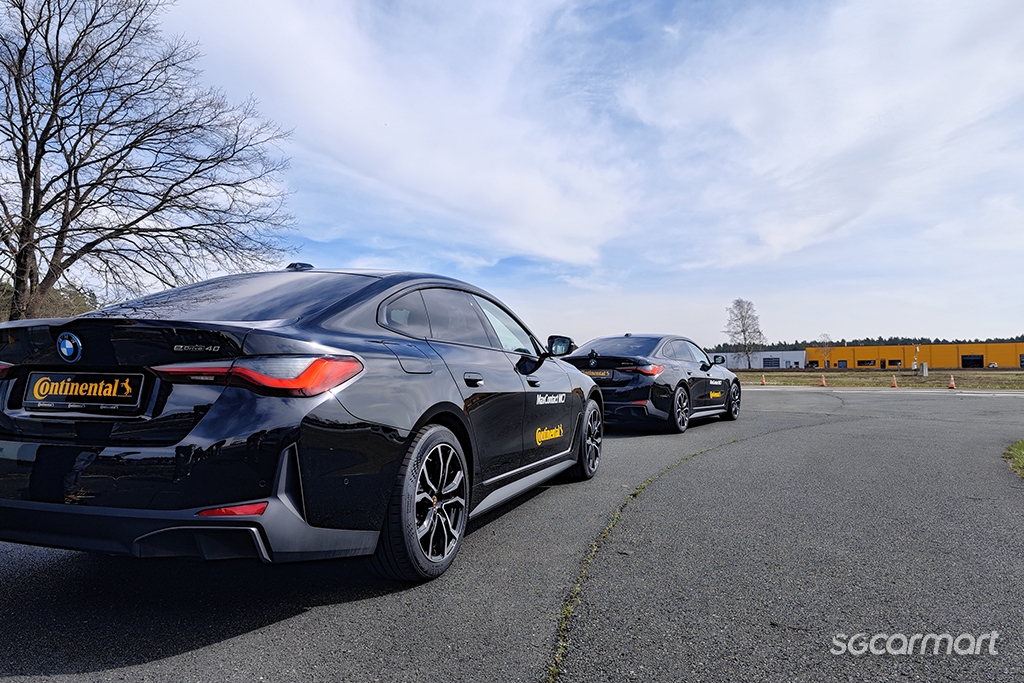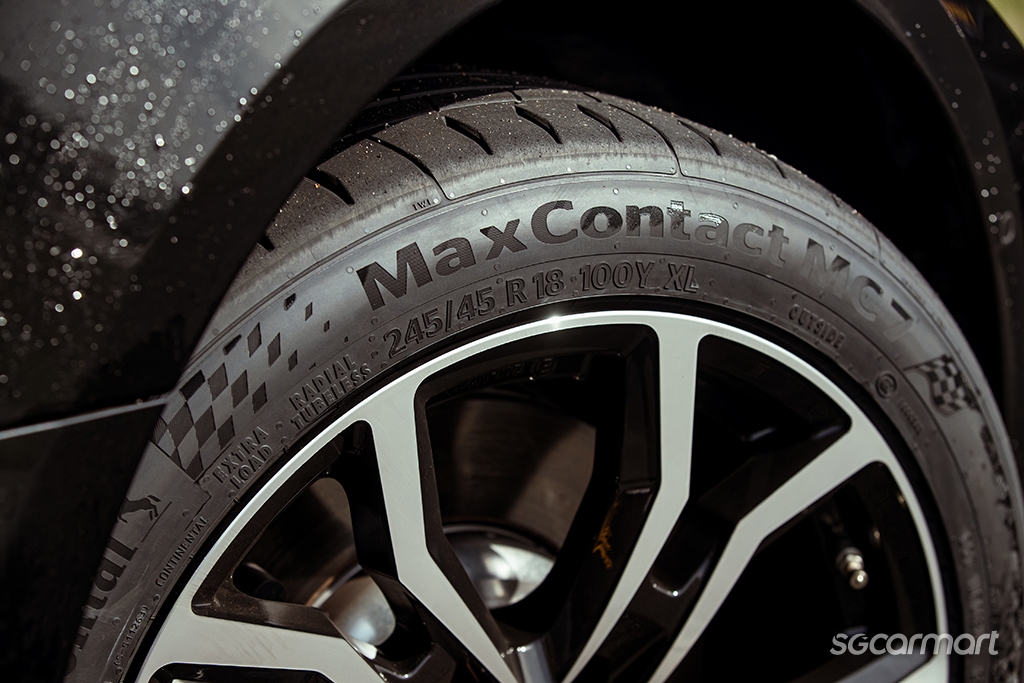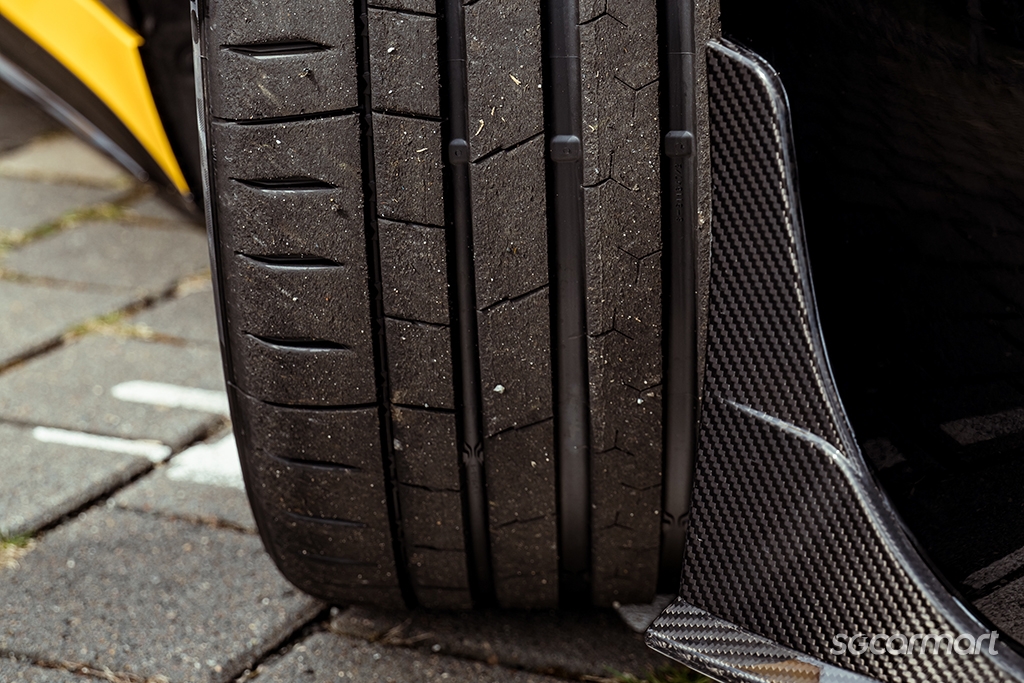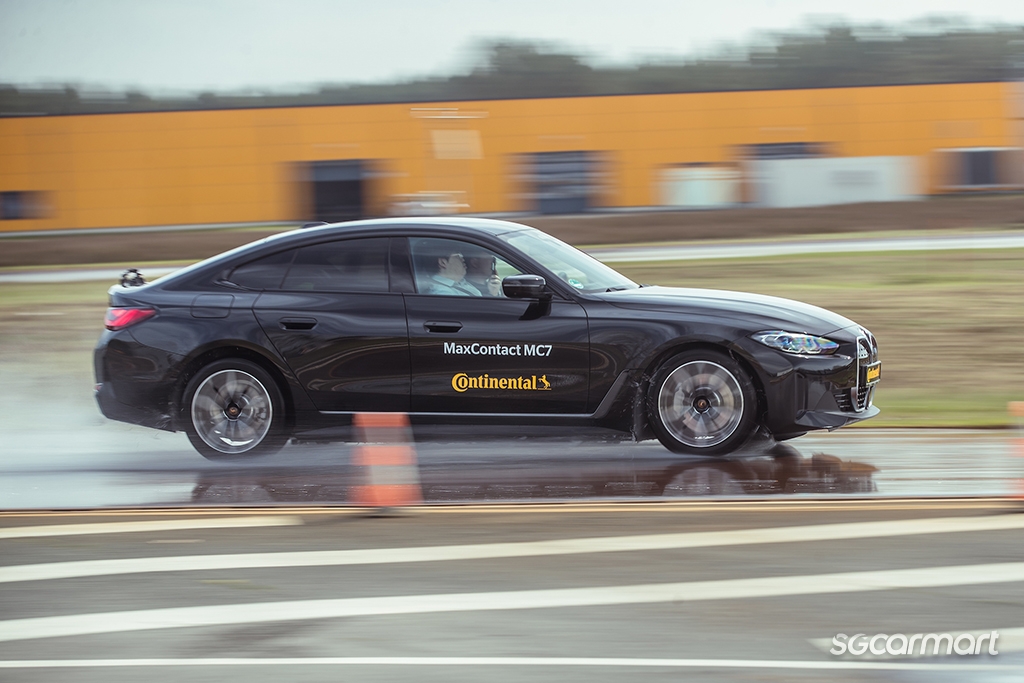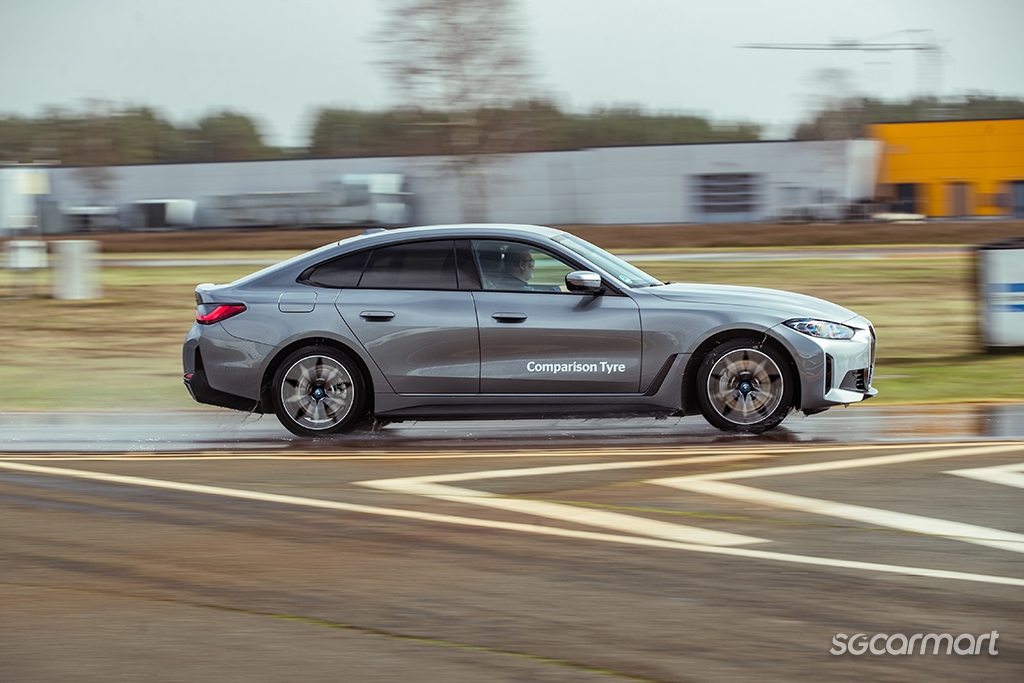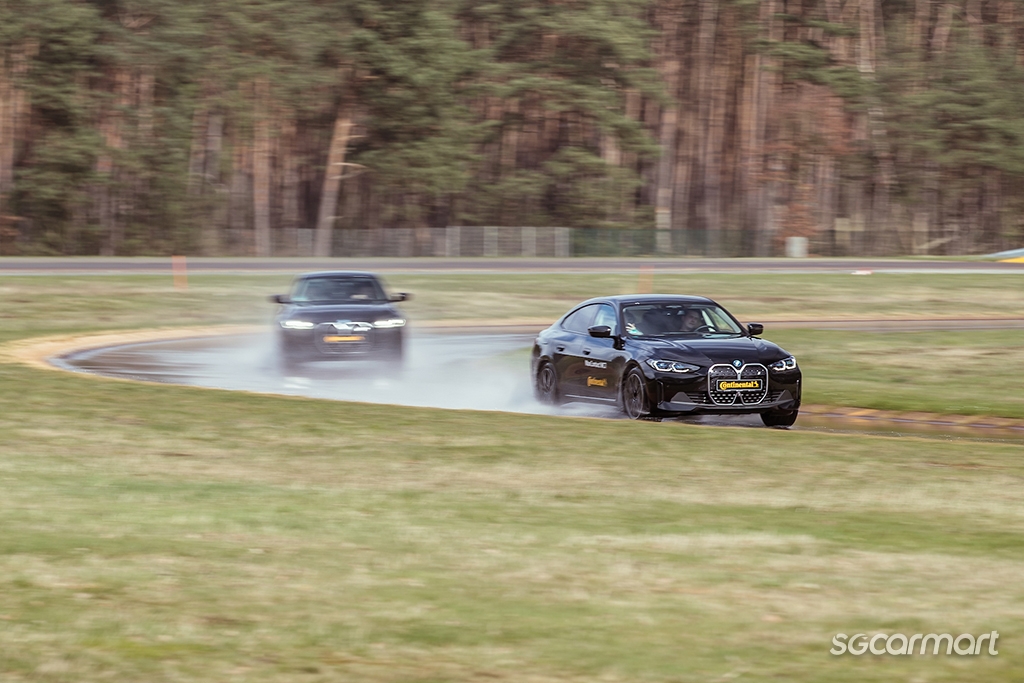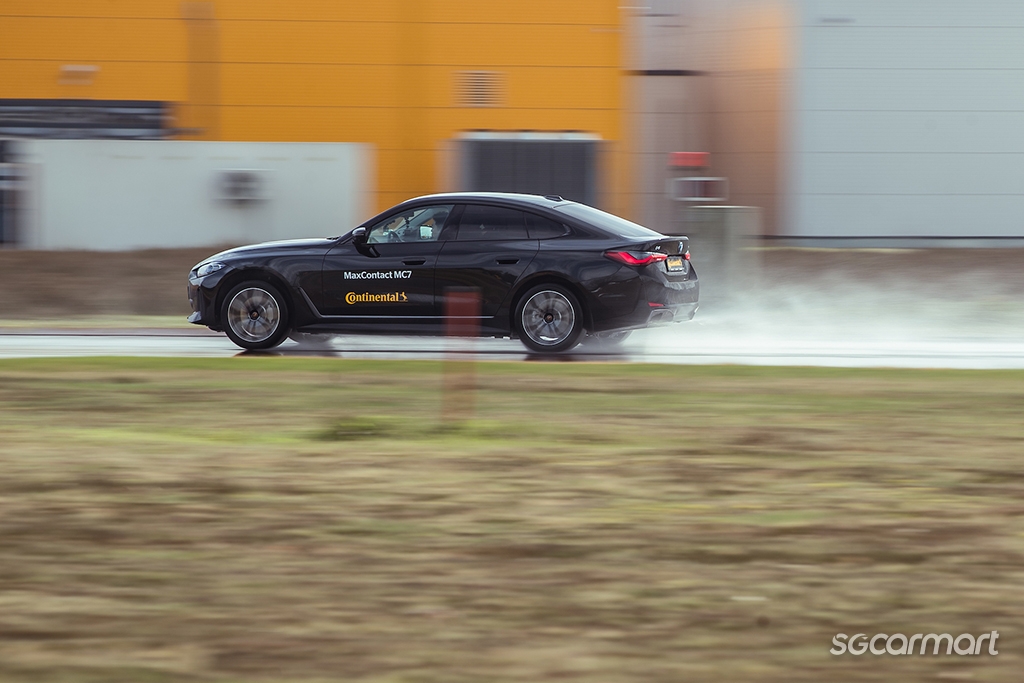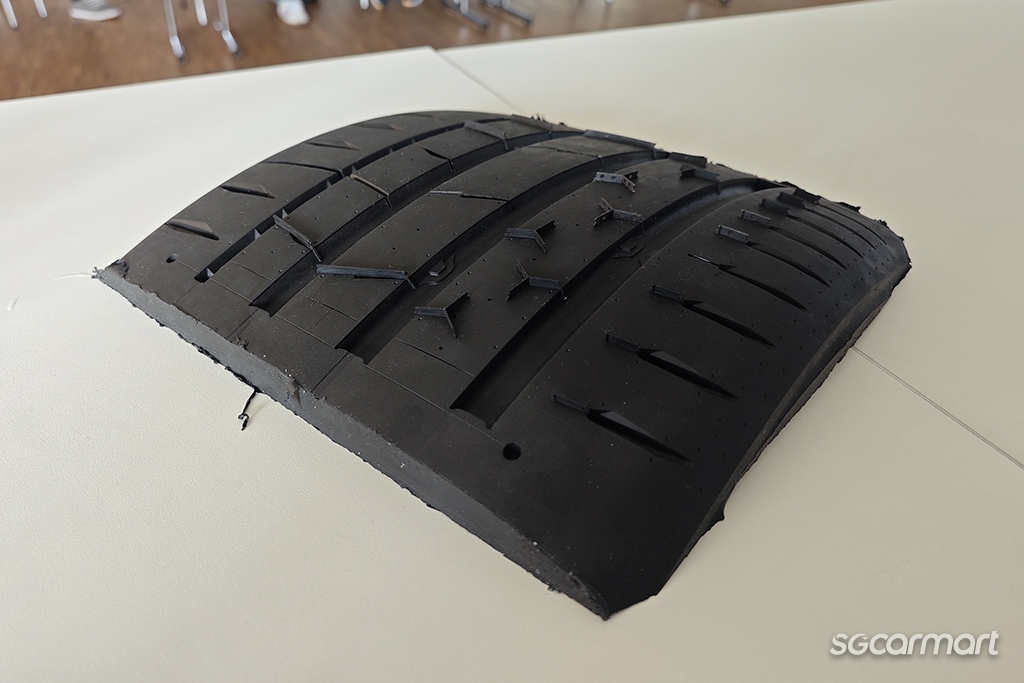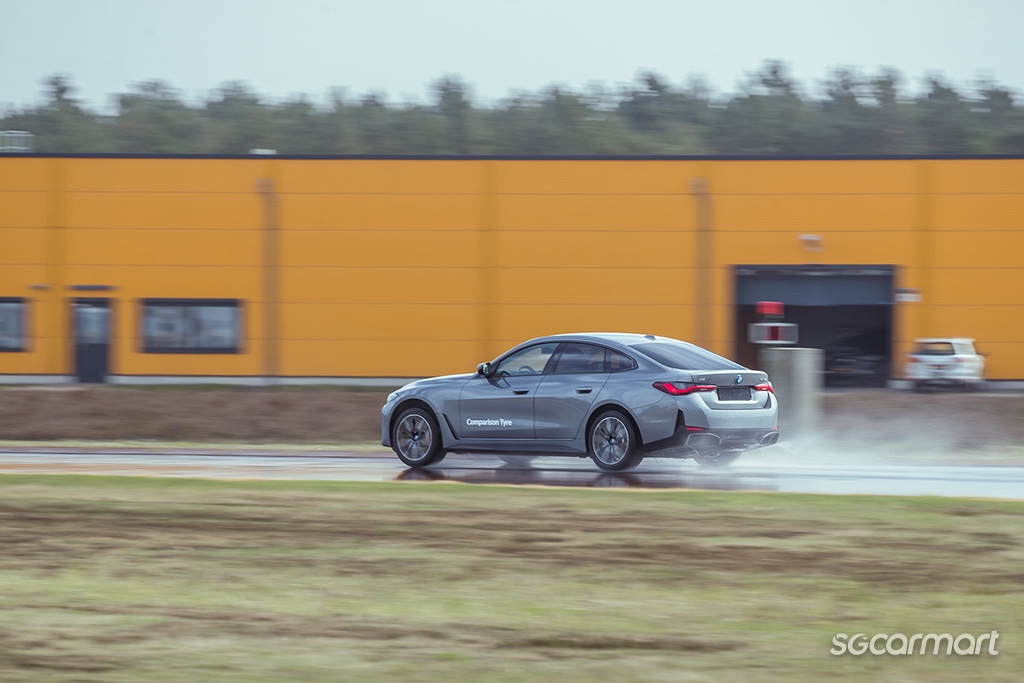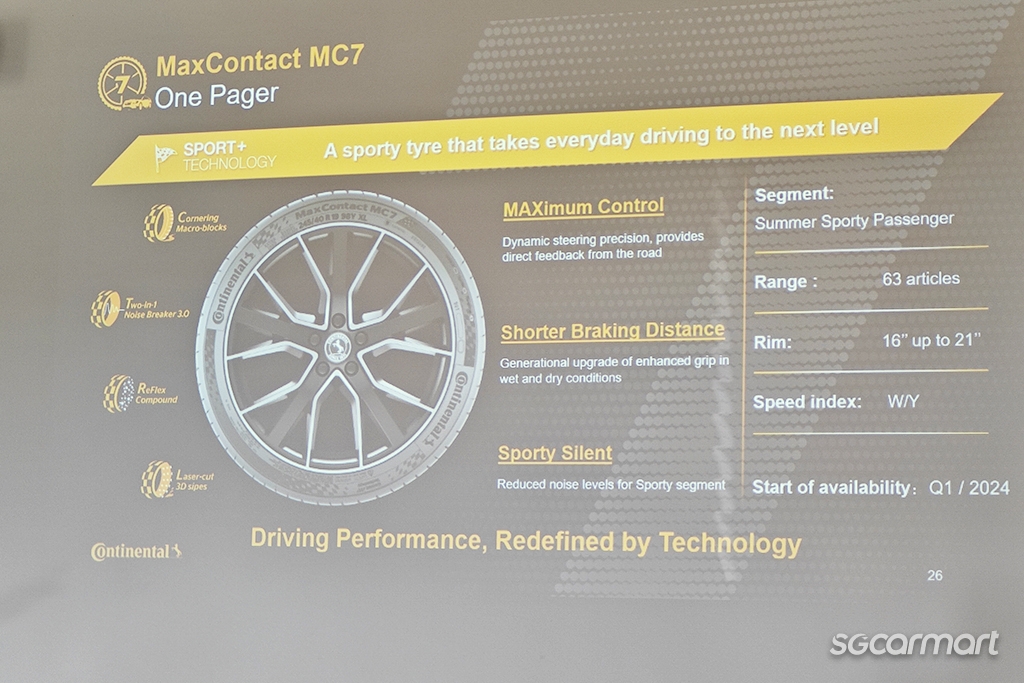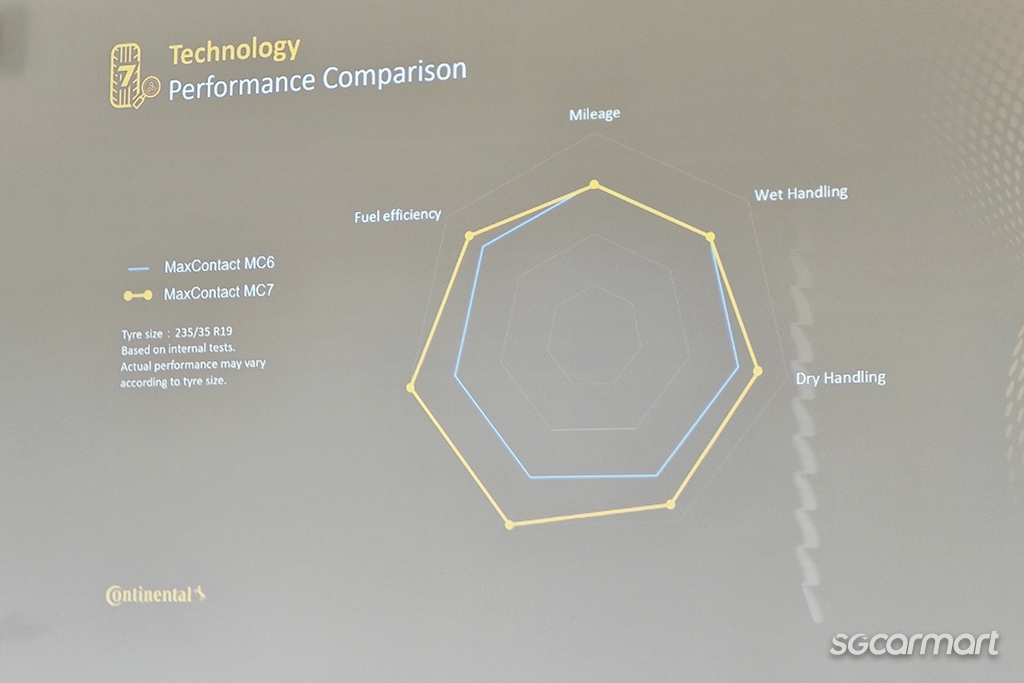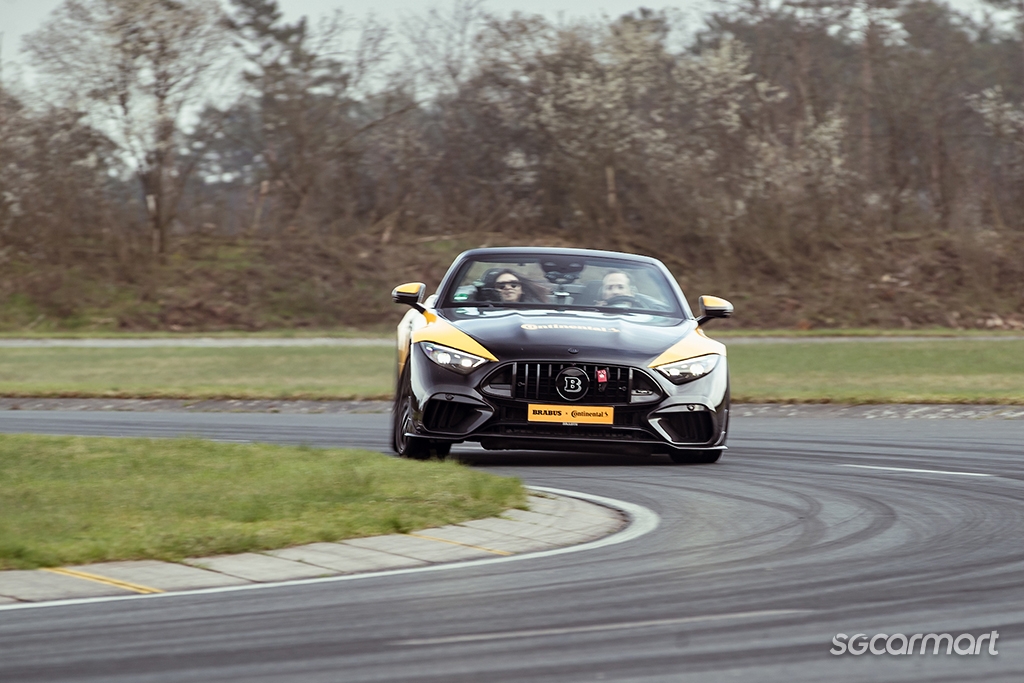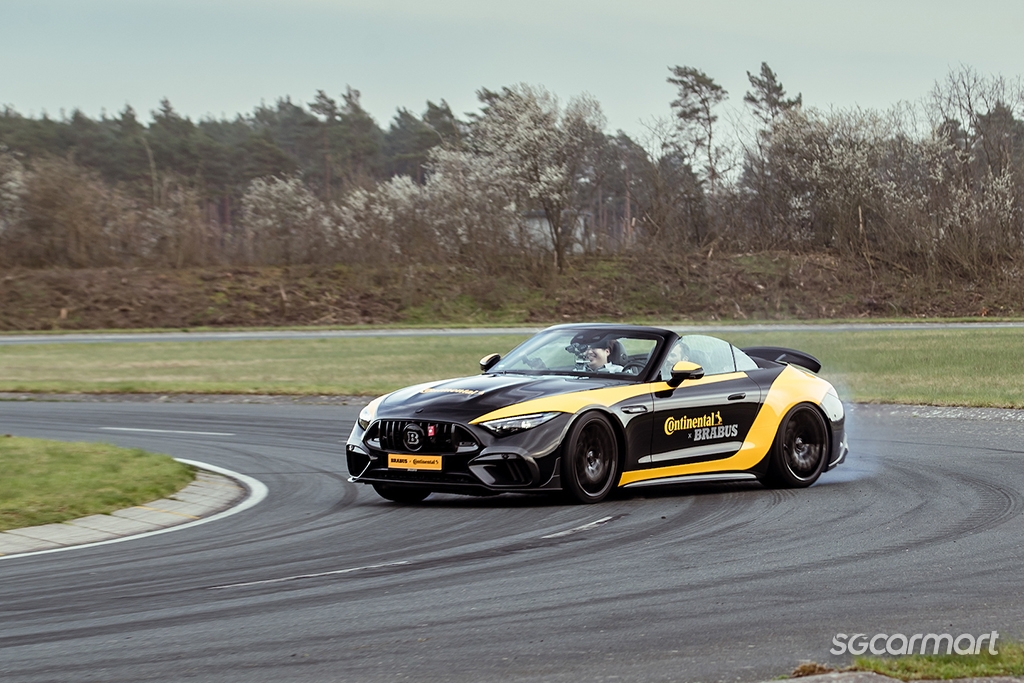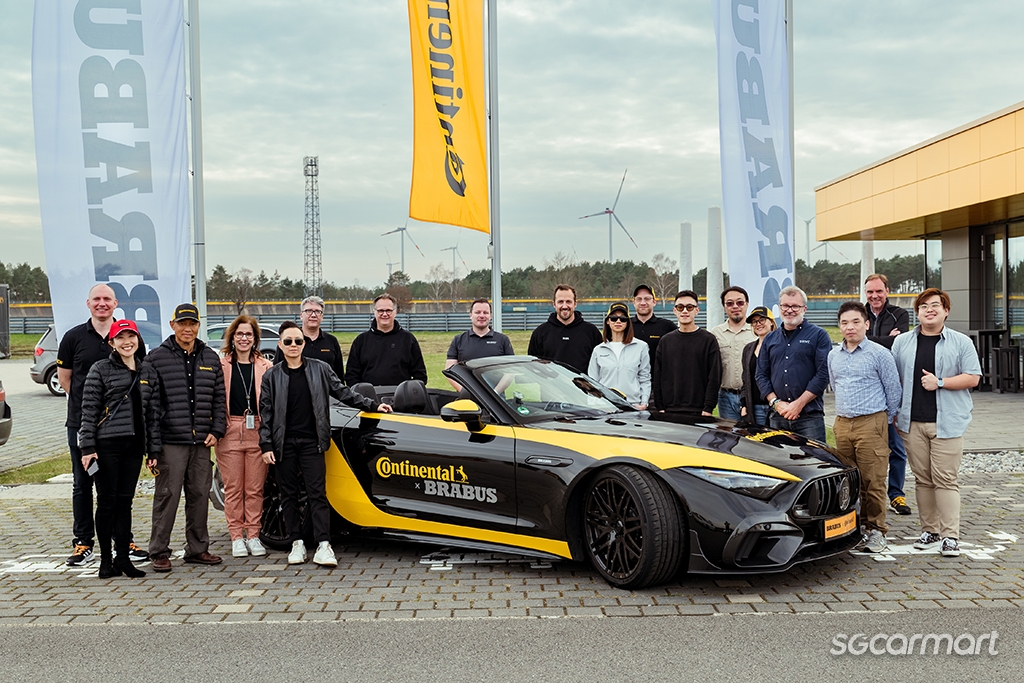MaxContact MC7 experience at Contidrom
10 Apr 2024|3,527 views
In anticipation of the launch of Continental Tires' latest high performance sporty tyre that has been tailor-made for the Asia Pacific market, the brand invited us to an unforgettable experience at its Contidrom facility in Buccholz, Germany - just over 40km from Continental Tire's Headquarters in Hanover.
With this unique opportunity, we got an exclusive peep at the facility where Continental Tires test and develop its products such as the new MaxContact MC7 tyre, and I can assure you that it was nothing less than impressive.
Contidrom - where conventional test tracks meet high-tech facilities
In operation since 1967, Contidrom is Continental Tire's private tyre test facility that comprises of a high-speed 2.8km oval track, along with a 1.8km wet-handling course and a 3.8km dry-handling track.
Conventional test tracks such as a lateral wet-grip track and a rail-guided braking test track can be found at the Contidrom
Being a full-fledged tyre testing facility, the Contidrom also has various other tracks, including a lateral wet-grip track (a small wet circle track), rail-guided braking test track, and noise-testing tracks, among others.
Precise and repeatable braking tests can be completed at the fully-automated tyre braking test facility, AIBA
Apart from the conventional test tracks, Contidrom is also the home to the brand's proprietary Automated Indoor Braking Analyzer (AIBA) facility. The AIBA facility is a main highlight of our visit to the Contidrom. Being a fully-automated tyre braking test facility, the AIBA is able to conduct precise and repeatable braking tests on a myriad of surfaces - wet, dry and even on ice.
In the AIBA, the cars are guided by rails, and are automatically accelerated to speeds up to 120km/h, then braked on a 75m long braking track. As the cars are accelerated with an electromagnetic linear drive borrowed from modern roller-coaster technology, so there is no need for fuel. This also does away with a long and extensive track for acceleration up to speed - the cars get up to speed in just three seconds.
On the high-tech side of things, we also had a glance of Continental Tire's latest facility: Dynamic Driving Simulator, a highly-detailed simulator system for virtual tyre testing.
Not to be mistaken for typical driving simulators, the focus of Continental's system is on accurate simulations of tyres, down to parameters such as tyre construction, belt material, belt angle, compound, and tread patterns. With this system, a tyre can be created and tweaked virtually. A test driver will then test the tyre virtually, and provide his feedback to further develop the tyre virtually before an actual prototype is made, saving precious development hours and materials.
Wet-handling experience with the Continental MaxContact MC7
After the tour of the impressive facility, it was time for the main event - getting behind the wheels of a car equipped with the new MaxContact MC7.
The new made-for-APAC MaxContact MC7 is developed with three key performance markers in mind - maximum control, shorter braking distance, and a sporty silent ride
Continental's MaxContact MC7 is developed with three key performance markers in mind: Maximum control, shorter braking distance, and a sporty silent ride.
It took a team of 25 engineers and material experts more than 8,000 hours in research and development to achieve the characteristics that Continental Tires wanted for the MC7. With safety and performance in mind, the MC7 is designed not only for dry roads, but also for stable and confident driving in wet weather conditions.
Identical BMW i4 eDrive40s were fitted with the new MaxContact MC7 and a competitor's tyre respectively for us to experience Continental Tire's technology
To demonstrate the wet-handling prowess of these new tyres, Continental prepared two identical BMW i4 eDrive40s equipped with the MaxContact MC7 and a competitor's tyre respectively for us to experience on Continental’s special wet-handling course.
The wet handling course is a narrow and curvy course that is perpetually wetted by pipes on either side of the track. It is designed to maintain a consistent layer of water atop the tarmac surface without any puddles, creating a controlled wet surface for tyre testing.
The superior wet traction of the MaxContact MC7, along with its communicative steering feel and effective wet-braking performance, gave plenty of confidence on the wet-handling track
The first car that I drove was equipped with the MaxContact MC7.
As my own car is fitted with ultra-ultra high performance tyres that do not perform particularly well on wet surfaces, I am naturally extra cautious when driving in such conditions. However, after the first lap with the MC7, it was clear to me that there's substantially more traction than I'm used to; following behind the instructor, I was able to carry a fair bit of speed through the curves on the wet surfaces without the rear of the car stepping out.
The communicative steering feel and effective wet-braking performance resulted also built up the confidence for me to go quicker. Before long, I found myself enjoying the drive on this unique course.
During the development of the MC7, the team had placed a particular emphasis on wet performance, utilising 3D Laser-cut Sipes to improve wet grip and braking, and to reduce the risk of aquaplaning by quickly expelling water that flows through the tyre grooves.
The use of silica technology within Continental's ReFlex compound works to shorten braking distances on both dry and wet roads as well.
Hopping over into the car with the comparison tyre made the benefits of these technologies on the MC7 clear. In contrast, the comparison tyre had subpar wet performance.
After a few frigid laps, I ended up choosing to slide the car a little to have some fun, instead of insisting on the futile attempt to replicate the speed that I could carry with the MC7.
The MaxContact MC7 isn't just designed for wet weather - built with Cornering Macro-blocks to maximise contact area with the road, a controlled and stable drive is achieved
Not just a wet-weather tyre
Apart from its reassuring wet-performance, the MaxContact MC7 is also designed for the dry.
Continental Tires maximised the contact area with the road to create a wider footprint with the use of Cornering Macro-blocks to result in a controlled and stable drive. It also features Noise Breaker 3.0 to break up sound waves for a quieter drive despite its sporty credentials.
We were told that the Asia Pacific Region has stricter regulations on tyre noise and it was one of the challenge that the team has to overcome - the typically inverse relationship between performance and low-noise characteristics makes it even more difficult.
As part of the experience, we were each given a taxi ride in the Brabus 750 Bodo Buschmann edition with professional race driver Lance Arnold behind the wheel. With 740bhp and 900nm of torque from its 4.0-litre twin-turbo V8 engine, this car is the prime candidate to test the limits of the MaxContact MC7’s performance.
The driver's razor-sharp skills and familiarity of the Contidrom Dry-handling course ensured an exhilarating experience. Bends and corners were taken at incredible speeds with the tyres holding on with their immense grip. This taxi ride in the Brabus was both a literal and figurative eye-opener.
My experience with the Continental MaxContact MC7 at the Contidrom has got me very excited about these tyres. To be able to handle the extreme torque and power of the Brabus machine while providing immense grip, and at the same time, able to provide a safe and confident drive in the wet, these tyres sure are something special.
The new Continental MaxContact MC7 tyre is available in sizes ranging from 16 to 21-inch and is exclusive to the Asia-Pacific region.
In anticipation of the launch of Continental Tires' latest high performance sporty tyre that has been tailor-made for the Asia Pacific market, the brand invited us to an unforgettable experience at its Contidrom facility in Buccholz, Germany - just over 40km from Continental Tire's Headquarters in Hanover.
With this unique opportunity, we got an exclusive peep at the facility where Continental Tires test and develop its products such as the new MaxContact MC7 tyre, and I can assure you that it was nothing less than impressive.
Contidrom - where conventional test tracks meet high-tech facilities
In operation since 1967, Contidrom is Continental Tire's private tyre test facility that comprises of a high-speed 2.8km oval track, along with a 1.8km wet-handling course and a 3.8km dry-handling track.
Conventional test tracks such as a lateral wet-grip track and a rail-guided braking test track can be found at the Contidrom
Being a full-fledged tyre testing facility, the Contidrom also has various other tracks, including a lateral wet-grip track (a small wet circle track), rail-guided braking test track, and noise-testing tracks, among others.
Precise and repeatable braking tests can be completed at the fully-automated tyre braking test facility, AIBA
Apart from the conventional test tracks, Contidrom is also the home to the brand's proprietary Automated Indoor Braking Analyzer (AIBA) facility. The AIBA facility is a main highlight of our visit to the Contidrom. Being a fully-automated tyre braking test facility, the AIBA is able to conduct precise and repeatable braking tests on a myriad of surfaces - wet, dry and even on ice.
In the AIBA, the cars are guided by rails, and are automatically accelerated to speeds up to 120km/h, then braked on a 75m long braking track. As the cars are accelerated with an electromagnetic linear drive borrowed from modern roller-coaster technology, so there is no need for fuel. This also does away with a long and extensive track for acceleration up to speed - the cars get up to speed in just three seconds.
On the high-tech side of things, we also had a glance of Continental Tire's latest facility: Dynamic Driving Simulator, a highly-detailed simulator system for virtual tyre testing.
Not to be mistaken for typical driving simulators, the focus of Continental's system is on accurate simulations of tyres, down to parameters such as tyre construction, belt material, belt angle, compound, and tread patterns. With this system, a tyre can be created and tweaked virtually. A test driver will then test the tyre virtually, and provide his feedback to further develop the tyre virtually before an actual prototype is made, saving precious development hours and materials.
Wet-handling experience with the Continental MaxContact MC7
After the tour of the impressive facility, it was time for the main event - getting behind the wheels of a car equipped with the new MaxContact MC7.
The new made-for-APAC MaxContact MC7 is developed with three key performance markers in mind - maximum control, shorter braking distance, and a sporty silent ride
Continental's MaxContact MC7 is developed with three key performance markers in mind: Maximum control, shorter braking distance, and a sporty silent ride.
It took a team of 25 engineers and material experts more than 8,000 hours in research and development to achieve the characteristics that Continental Tires wanted for the MC7. With safety and performance in mind, the MC7 is designed not only for dry roads, but also for stable and confident driving in wet weather conditions.
Identical BMW i4 eDrive40s were fitted with the new MaxContact MC7 and a competitor's tyre respectively for us to experience Continental Tire's technology
To demonstrate the wet-handling prowess of these new tyres, Continental prepared two identical BMW i4 eDrive40s equipped with the MaxContact MC7 and a competitor's tyre respectively for us to experience on Continental’s special wet-handling course.
The wet handling course is a narrow and curvy course that is perpetually wetted by pipes on either side of the track. It is designed to maintain a consistent layer of water atop the tarmac surface without any puddles, creating a controlled wet surface for tyre testing.
The superior wet traction of the MaxContact MC7, along with its communicative steering feel and effective wet-braking performance, gave plenty of confidence on the wet-handling track
The first car that I drove was equipped with the MaxContact MC7.
As my own car is fitted with ultra-ultra high performance tyres that do not perform particularly well on wet surfaces, I am naturally extra cautious when driving in such conditions. However, after the first lap with the MC7, it was clear to me that there's substantially more traction than I'm used to; following behind the instructor, I was able to carry a fair bit of speed through the curves on the wet surfaces without the rear of the car stepping out.
The communicative steering feel and effective wet-braking performance resulted also built up the confidence for me to go quicker. Before long, I found myself enjoying the drive on this unique course.
During the development of the MC7, the team had placed a particular emphasis on wet performance, utilising 3D Laser-cut Sipes to improve wet grip and braking, and to reduce the risk of aquaplaning by quickly expelling water that flows through the tyre grooves.
The use of silica technology within Continental's ReFlex compound works to shorten braking distances on both dry and wet roads as well.
Hopping over into the car with the comparison tyre made the benefits of these technologies on the MC7 clear. In contrast, the comparison tyre had subpar wet performance.
After a few frigid laps, I ended up choosing to slide the car a little to have some fun, instead of insisting on the futile attempt to replicate the speed that I could carry with the MC7.
The MaxContact MC7 isn't just designed for wet weather - built with Cornering Macro-blocks to maximise contact area with the road, a controlled and stable drive is achieved
Not just a wet-weather tyre
Apart from its reassuring wet-performance, the MaxContact MC7 is also designed for the dry.
Continental Tires maximised the contact area with the road to create a wider footprint with the use of Cornering Macro-blocks to result in a controlled and stable drive. It also features Noise Breaker 3.0 to break up sound waves for a quieter drive despite its sporty credentials.
We were told that the Asia Pacific Region has stricter regulations on tyre noise and it was one of the challenge that the team has to overcome - the typically inverse relationship between performance and low-noise characteristics makes it even more difficult.
As part of the experience, we were each given a taxi ride in the Brabus 750 Bodo Buschmann edition with professional race driver Lance Arnold behind the wheel. With 740bhp and 900nm of torque from its 4.0-litre twin-turbo V8 engine, this car is the prime candidate to test the limits of the MaxContact MC7’s performance.
The driver's razor-sharp skills and familiarity of the Contidrom Dry-handling course ensured an exhilarating experience. Bends and corners were taken at incredible speeds with the tyres holding on with their immense grip. This taxi ride in the Brabus was both a literal and figurative eye-opener.
My experience with the Continental MaxContact MC7 at the Contidrom has got me very excited about these tyres. To be able to handle the extreme torque and power of the Brabus machine while providing immense grip, and at the same time, able to provide a safe and confident drive in the wet, these tyres sure are something special.
The new Continental MaxContact MC7 tyre is available in sizes ranging from 16 to 21-inch and is exclusive to the Asia-Pacific region.
Thank You For Your Subscription.























